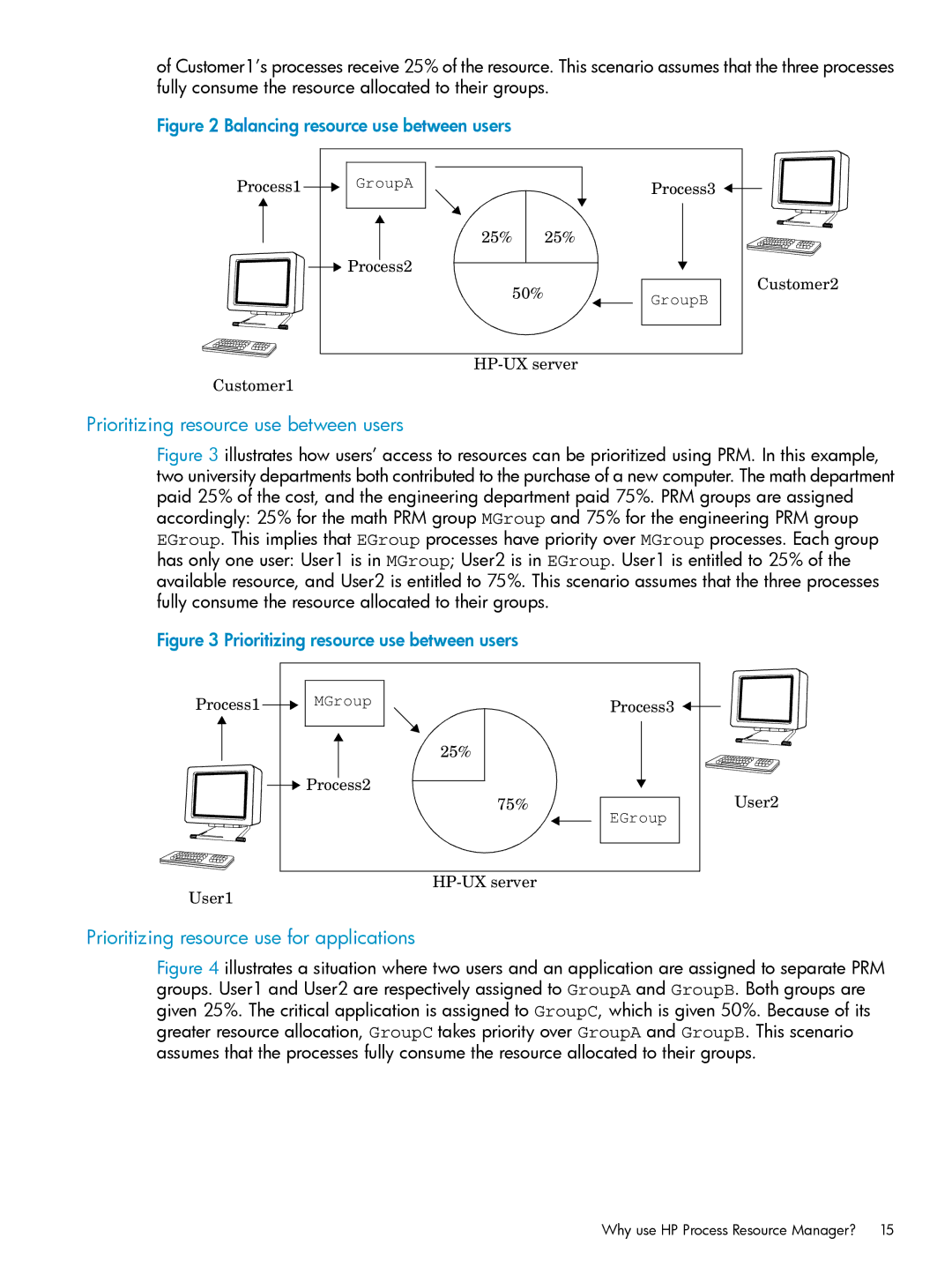
of Customer1’s processes receive 25% of the resource. This scenario assumes that the three processes fully consume the resource allocated to their groups.
Figure 2 Balancing resource use between users
PROCESS1 | GROUPA | PROCESS3 |
| 25% | 25% |
| PROCESS2 |
|
| 50% | CUSTOMER2 |
| GROUPB | |
|
|
CUSTOMER1
Prioritizing resource use between users
Figure 3 illustrates how users’ access to resources can be prioritized using PRM. In this example, two university departments both contributed to the purchase of a new computer. The math department paid 25% of the cost, and the engineering department paid 75%. PRM groups are assigned accordingly: 25% for the math PRM group MGroup and 75% for the engineering PRM group EGroup. This implies that EGroup processes have priority over MGroup processes. Each group has only one user: User1 is in MGroup; User2 is in EGroup. User1 is entitled to 25% of the available resource, and User2 is entitled to 75%. This scenario assumes that the three processes fully consume the resource allocated to their groups.
Figure 3 Prioritizing resource use between users
PROCESS1 | MGROUP | PROCESS3 |
|
| 25% |
| PROCESS2 |
|
|
| 75% |
|
| EGROUP |
USER1
USER2
Prioritizing resource use for applications
Figure 4 illustrates a situation where two users and an application are assigned to separate PRM groups. User1 and User2 are respectively assigned to GroupA and GroupB. Both groups are given 25%. The critical application is assigned to GroupC, which is given 50%. Because of its greater resource allocation, GroupC takes priority over GroupA and GroupB. This scenario assumes that the processes fully consume the resource allocated to their groups.
Why use HP Process Resource Manager? 15
